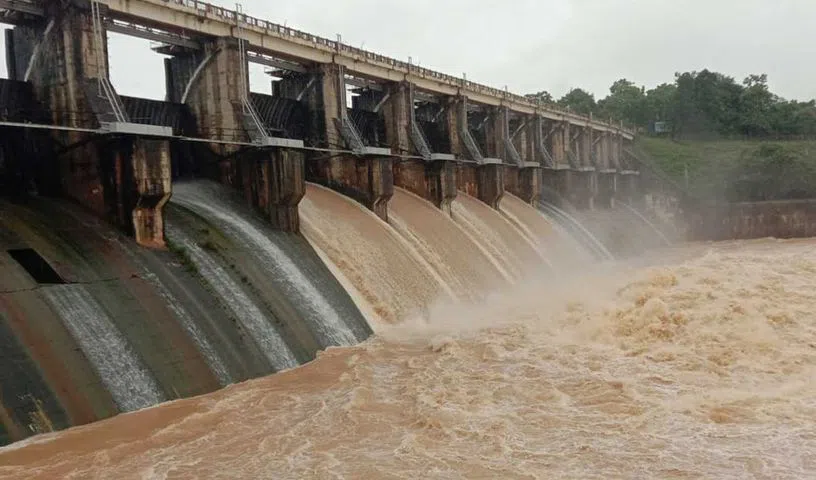Telangana floods cause extensive damage to irrigation infrastructure; loss put at Rs 350 cr
Fortunately, the power substation and other infrastructure at a higher elevation were spared from flood damage
Hyderabad: Floods in Telangana have caused significant disruptions and dislocation, with preliminary estimates indicating that the irrigation department has suffered losses between Rs 300 crore to Rs 350 crore. The full extent of the damage is yet to be assessed comprehensively.
Two crucial pump houses of irrigation projects were severely affected. The Vattemvagu pump house under the Palamuru Ranga Reddy Lift Irrigation Scheme (PRLIS) saw four installed pumping units and one unit under installation submerged.
These pump houses, each with a capacity of 145 MW, are considerably larger than the Bahubali pumps used in the Kaleshwaram Lift Irrigation Scheme. The dewatering process is expected to take over a month, with the entire surge pool and tunnel filled with flood runoff from nearby tanks.
Fortunately, the power substation and other infrastructure at a higher elevation were spared from flood damage.
In a related incident, the Bhakta Ramadasu Lift Irrigation Scheme (BRLIS) pump house in Khammam district also suffered extensive damage as flood waters entered the facility.
This scheme, that was part of the first irrigation project completed during the BRS regime, serves an ayacut of 59,000 acres in the tail-end of the SRSP Stage II in Palair constituency. Officials are still assessing the damage to the two pumping units, which have a combined yield of 600 cusecs.
The pump house, set up in a record 11 months and commissioned in February 2017, will require repairs and restoration estimated to cost around ten percent of its original cost.
Additionally, the Nagarjuna Sagar left canal developed breaches at three locations in Zones I and II due to the floods. Water releases to the canal have been halted to facilitate urgent repairs.
These breaches are attributed to prolonged periods of non-use, with the canal network experiencing significant vegetation growth, weakening the structure and obstructing water flow. Officials warn that more breaches could occur once water is released at full capacity of 11,000 cusecs.
The canal systems of SRSP and KLIS, which too had no water flows during the last Rabi season, may face similar issues. In total, 200 tanks developed breaches due to the recent floods, necessitating substantial expenditure for restoration and the number may rise once the enumeration was completed.
Authorities are preparing estimates to address these breaches within a fortnight, emphasizing the need for regular maintenance and use of irrigation infrastructure to prevent such occurrences in the future.








